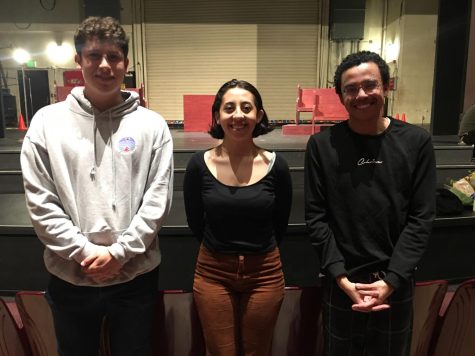Guevara's work lives through film
Shirts, stickers and purses all stamped with the iconic photograph of Ernesto “Che” Guevara wearing a black beret is proof that the Argentinean revolutionary is still a potent symbol of rebellion.
For anyone interested in a romanticized portion of what some claim was a lifechanging experience for Guevara’s multifaceted life, “The Motorcycle Diaries,” is a movie worth watching.
Directed by Walter Salles, also responsible for “Behind the Sun” and “Central Station,” “Motorcycle diaries” is an adaptation of the journals of Guevara and his friend Alberto Granado as they travel from Buenos Aires, down the coast of Argentina, through the Andes into Chile, Peru, Colombia and Venezuela.
Gael Garcia Bernal plays the role of Guevara, a 23-year-old, middle class medical student in Buenos Aires who researches leprosy and is interested in treating lepers.
Rodrigo De La Serna plays Granado, a biochemist student and Guevara’s comic foil. The film also features Mia Maestro, who plays the role of Guevara’s girlfriend.
Historically, early in his years of study at medical school, Guevara traveled throughout Argentina studying leprosy and tropical diseases in the villages.
In his last year at the school, Guevara and his friend Granado went on a trip through Latin America on a motorcycle.
As covered in his book, Guevara was given the chance to know the villagers personally and witnessed in this trip the exploitation by powerful industries, landholders and the indifferent government of the local villagers.
When Guevara graduated from medical school he worked in a leper colony in Venezuela.
He was later put in jail for writing a publication on the natives. Shortly after being released, Guevara began his revolutionary works.
The film, set in the 1950s, is episodic in its nature and describes the journey as political awakening for Guevara.
Furthermore, the film goes into great detail describing Guevara’s first-hand experience regarding the hash lives of people throughout South America, as “La Poderosa,” or “The Mighty One,” nicknames for the motorcycle that carries them farther away from their familiar setting.
The film’s centerpiece is Guevara and Granado’s stay at a Peruvian leper colony on the Amazon River, where their energy, high spirits and compassion allow them to connect promptly with both the staff and the patients.
As illustrated in the film, the two friends in a mere two-week stay at the colony are responsible for breaking down social barriers and improving the relations between the medical staff and their patients, as well as improving the overall quality of the lives of the lepers.
The chemistry between Bernal and De La Serna is believable and the good nature of their friendship is palpable, adding to the enjoyment of the film.
In addition to their chemistry, Bernal’s portrayal as Guevara’s humanity and integrity previous to his role as a communist leader is credible and adds to the overall mood of the story as a recount of a memorable story.
De La Serna’s performance is also notable showing depth and credibility in the affection for Guevara.
The film is successful in illustrating the romanticized story of two friends and their profound journey in the realization of the corruption that surrounds them.
However, those looking for an accurate account of Guevara’s life may be disillusioned.
On Screen
What: “The Motorcycle Diaries”: In 1952, two young Argentine men embark on a road trip to discover difficult times in Latin America.
Rated: R
Starring: Gael Garcia, Rodrigo de la Serna, Mia Maestro, Mercedes Moran.
Bottom Line: Those looking for an accurate retrospective of Guevara’s life and works might consider looking elsewhere.



![Universal Pictures "Wicked," directed by Jon M. Chu, will be playing in theaters worldwide on Nov. 22. (Elliott Bullock II [The Union])](https://eccunion.com/wp-content/uploads/2024/11/wicked-poster-from-elliott-bullock-ii-600x270.jpg)



